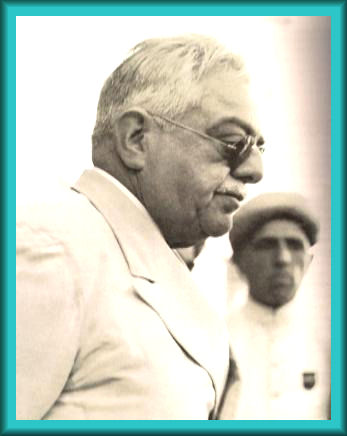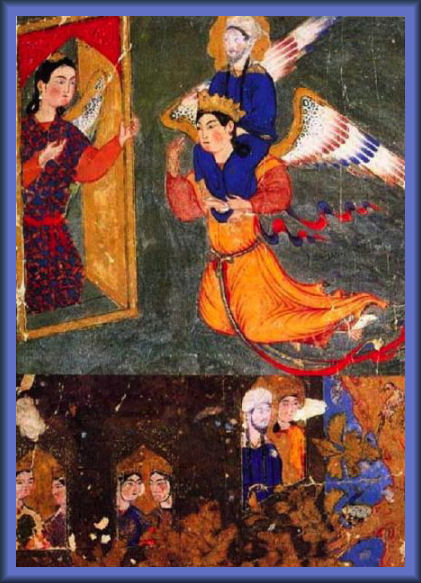 Reincarnation or Companionship on High?
Reincarnation or Companionship on High?
An article by Imam Hazrat Mowlana Sultan Mahomed Shah (s.a.s.) Aga Khan III
The Christian burial ceremony and the prayers then said by the presiding ecclesiastics refer to resurrection in a way that implies some kind of similarity with the supposed historical resurrection of Christ three days after his death. There is the undoubted implication in the Burial Service that a similar resurrection will in time be the fate of those who die in Christianity.
Whether any other religion accepts such a definite (and, if I may say so, materialistic) conception of life eternal and immortality, I am not sure. The Buddhists and Brahmans certainly believe in some kind of survival, but that is very often allied to the idea of trans-migration of souls from animals to men and angels or still higher beings in the spiritual world of those faiths.
The Islamic conception is, however, different from the extreme materialistic idea of a live body, similar to the man as he was in life, getting up from his utter destructibility, to form a body with all the nervous and other forces that control our existence in this world. Such an idea does not appeal to those who have not been brought up from childhood in the personal Faith of the Resurrection of the Master.
The Hindu and Buddhistic explanations of life after death, with always the influence of the soul taking forms either much lower, such as the lowest animals, or much higher, like some so-called Gods of both Brahmanism and Buddhism, seem to many brought up outside their immemorial tradition as more a hope and pious wish than anything founded on fact.
Now if we turn to the Catholic religion we see immediately in all Catholic countries that St. Thomas Aquinas philosophy is still the foundation on which the Catholic Faith rests. I am not at all certain about the Church of England (as established at the time of the Reformation), that the branch of the Holy Catholic Church which appoints and crowns the Kings of England; for I have never been able to find out whether they also – like the more senior and universal Catholic Church of Rome – base their religious philosophy on the Aristotelian logic of St. Thomas.
 For Muslims there has been a similar personal influence, and in many ways it resembles the position that St. Thomas Aquinas took in the Catholic Church. First of all as regards the idea of divinity of God: a great deal of the Quran is taken up with God’s intimate presence in the world, with the importance of each human being’s relations with the Creator; but only in one chapter – the chapter on Light – is the nature of the divinity referred to in a very clear form. Although, of course, we do not believe that the person of the Creator is a form of light, either in waves or in the minutest association of myriads of points, yet the consequence of the light as seen in the universe, is the nearest we can imagine or hope to believe about the person of our Creator.
For Muslims there has been a similar personal influence, and in many ways it resembles the position that St. Thomas Aquinas took in the Catholic Church. First of all as regards the idea of divinity of God: a great deal of the Quran is taken up with God’s intimate presence in the world, with the importance of each human being’s relations with the Creator; but only in one chapter – the chapter on Light – is the nature of the divinity referred to in a very clear form. Although, of course, we do not believe that the person of the Creator is a form of light, either in waves or in the minutest association of myriads of points, yet the consequence of the light as seen in the universe, is the nearest we can imagine or hope to believe about the person of our Creator.
This was as far as Islamic theological thought went in the early years after the Prophet’s death. But just as St. Thomas Aquinas came long after the beginning of the Christian era and laid the foundation of the philosophy of the Roman Catholic Church, so in the Muslim world the Spaniard Ibn-Rushd (known to the Europeans as Averroes) changed the Islamic outlook on the foundation of Faith. He switched it from reasoning, which he clearly showed was the work of the material brain and could never grasp spiritual truth, nor could spiritual truth ever be found by logic and science; it was an illumination and enlightenment directly given by the Creator to those who had the grace to receive it. But as Ibn-Rushd has consistently shown, this spiritual knowledge, directly given, can be studied, learnt and followed by the whole Islamic mass of the population. It is a Muslim’s highest duty, by intensive prayer and spiritual abandonment of self to the great universal Soul of the Universe, to get the supreme blessing of direct communion with Absolute Reality.
Just as the events of Easter Week become part of Christianity and the hope of men, so the death-bed scene of our Holy Prophet, so well authenticated by evidence, took place in the presence of his two cousins, Ali and Ibn-Abbas, his wives, and above all, his future great successor, the Caliph Omar, then one of his leading companions. All this evidence is exactly the same. The last words of the Prophet were “Companionship on High.”
This is a third way of looking at survival after death (apart from the Biblical raising of the body, and from the indefinite and varied doctrines of the several Hindu schools of thought and the two great Buddhist Northern and Southern sects). It is the hope of all true Muslims, like their Prophet, namely, “Companionship on High.”
Source: Africa Ismaili Kisumu Supplement, March 28, 1969
Related Links
![]() More Articles by Mowlana Sultan Mahomed Shah Aga Khan III
More Articles by Mowlana Sultan Mahomed Shah Aga Khan III
![]() Light upon Light
Light upon Light
![]() Qadi Noman Majalis
Qadi Noman Majalis
![]() Risala Dar Haqiqati Din by Shihabu’d-din Shah
Risala Dar Haqiqati Din by Shihabu’d-din Shah
![]() Light upon Light Majalis-ul Muayyadiya – by Al Muayyad fid-din Shirazi
Light upon Light Majalis-ul Muayyadiya – by Al Muayyad fid-din Shirazi
![]() “Light Upon Light” Interpretation of Quranic Ayat – Sura Noor by Al-Waez R. D. Shariff
“Light Upon Light” Interpretation of Quranic Ayat – Sura Noor by Al-Waez R. D. Shariff
![]() The Importance of Studying Ismailism by Professor Ivanow
The Importance of Studying Ismailism by Professor Ivanow
![]() The Importance of Spiritual Literacy
The Importance of Spiritual Literacy
![]() The Religion of My Ancestors by Aga Khan III – Mowlana Sultan Mahomed Shah
The Religion of My Ancestors by Aga Khan III – Mowlana Sultan Mahomed Shah
Pingback: Melanie Glastrong